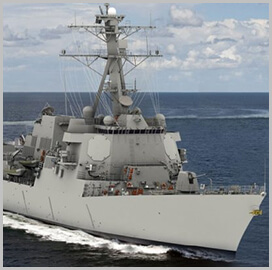Huntington Ingalls Industries‘ Ingalls Shipbuilding has formally named and launched the U.S. Navy’s first Flight III Arleigh Burke-class guided missile destroyer during a christening ceremony in Mississippi.
According to Adm. Mike Gilday, chief of naval operations, the future USS Jack H. Lucas will offer a new radar system and electric plant to the naval destroyer fleet, HII said Saturday.
“Jack H. Lucas is not only the most capable and sophisticated surface combatant ever built by man, but it also represents the bridge from the past to the future,” shared Gilday during his keynote speech.
The first-ever Flight III destroyer is named after Jack Lucas, a U.S. Marine Corps member from Mississippi who was the youngest serviceman to receive a Medal of Honor during World War II.





